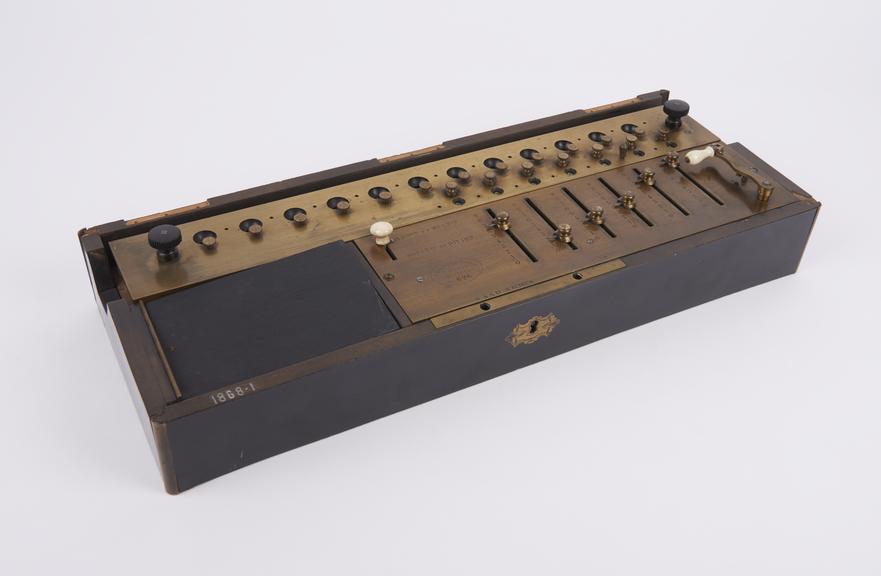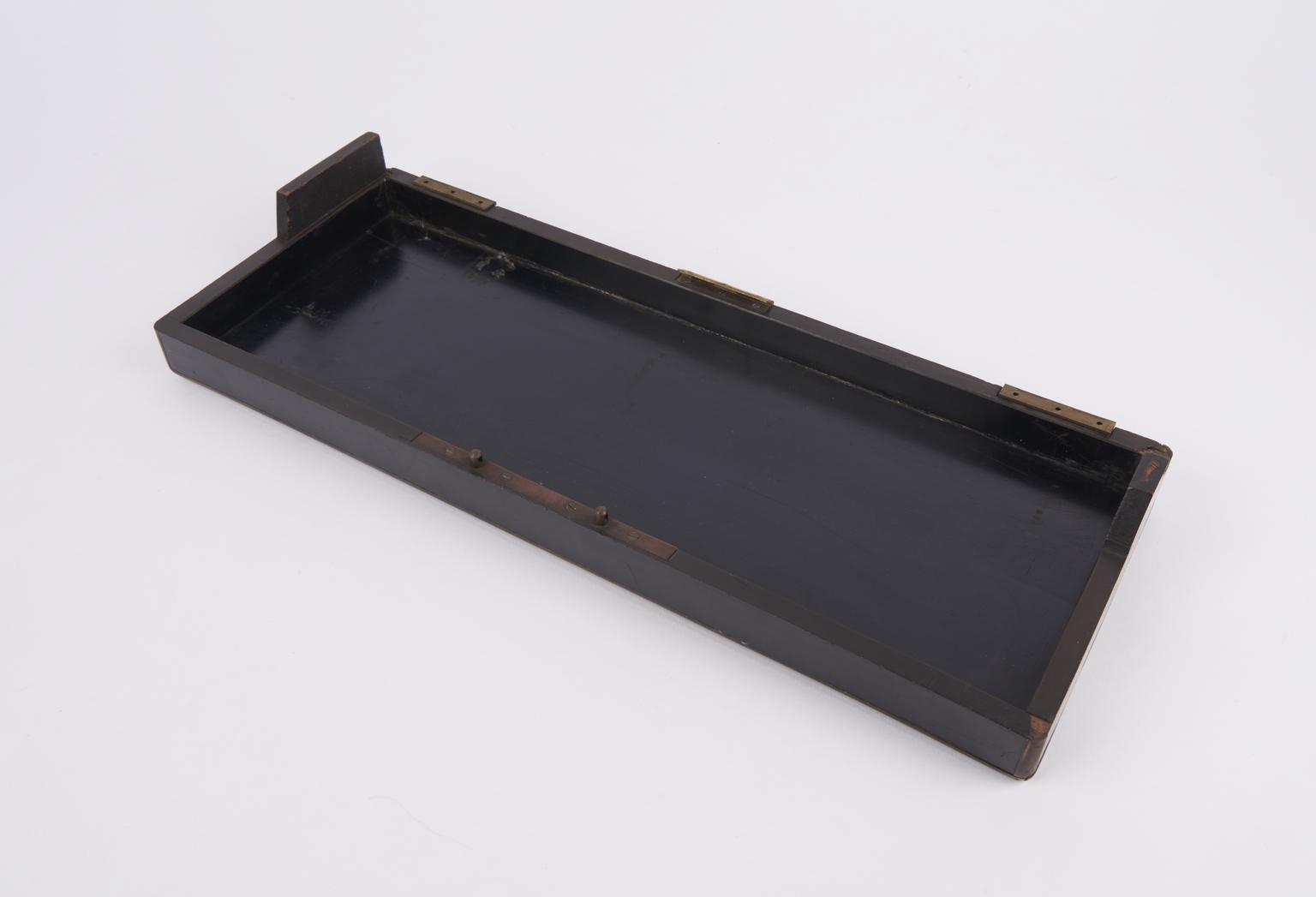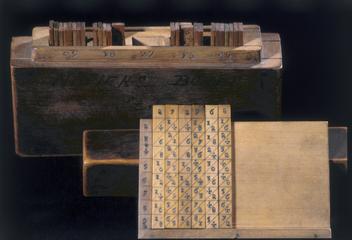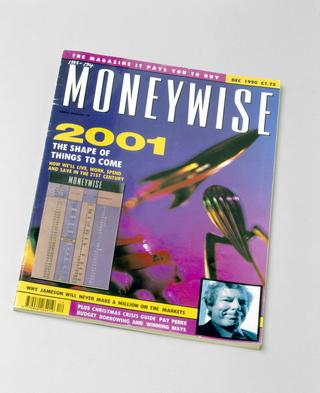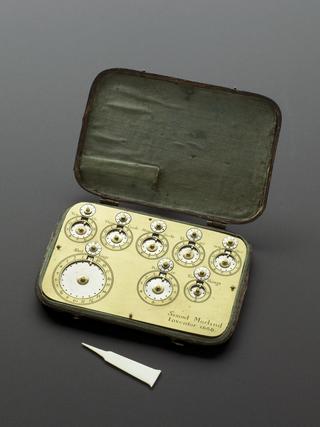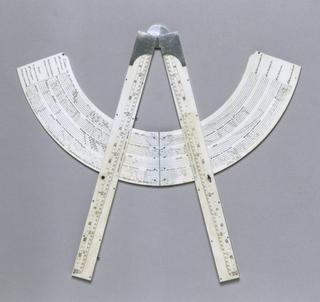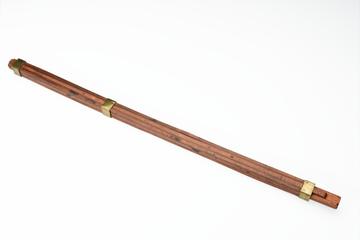Colmar arithmometer
Thomas de Colmar arithmometer, no. 696, in box with lid, 18" x 3 1/2"
- Measurements:
-
overall: 180 mm x 470 mm x 85 mm, 5.725 kg
- Materials:
- steel
- Object Number:
- 1868-1 Pt1
- type:
- arithmometer
- Image ©
- The Board of Trustees of the Science Museum

